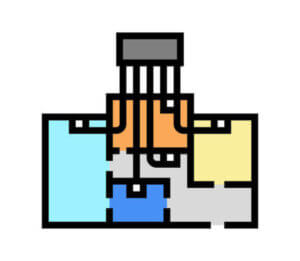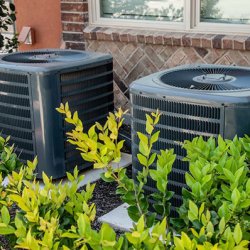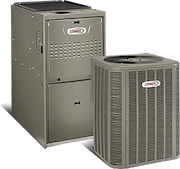
In ductless HVAC zoning, your property is divided into different temperature-controlled areas. Each zone has its own indoor unit or thermostat control, which is connected to an outdoor unit. This system allows you to maintain different temperatures in different rooms or zones, based on your preference.
Galmiche & Sons recommends ductless HVAC zoning to improve energy efficiency and indoor comfort for homeowners throughout St. Louis. For more information on enhancing air quality or following eco-friendly HVAC practices, contact us at 314-993-1110 or contact us online to request a quote for a new HVAC system installation.
How Does a Ductless HVAC Zoning System Work?
HVAC zoning can be achieved in two ways: using ductless mini-split systems or installing dampers in the existing ductwork.
Mini-split systems consist of individual units that can be conveniently mounted on walls or ceilings, equipped with their own thermostats. The set-up allows for precise temperature control in each room, giving your family the option to set the perfect temperature for their comfort. No more thermostat wars, as everyone can have their preferred room temperature.
For homes with existing HVAC systems and ductwork, manual or automatic dampers can be installed. These dampers create separate zones, enabling you to customize the temperature in each zone. Each family member can enjoy their desired level of comfort, instead of sticking to a single temperature throughout the entire home.
Learn more about how HVAC zoning systems work

What Are the Components of a Ductless HVAC System?
A ductless HVAC zoning system consists of the following components:
- An outdoor unit, which is typically installed outside your home, and positioned on a wall to increase efficiency and minimize noise indoors. It consists of the compressor and condenser, which cool the air and facilitate heat exchange.
- Indoor units that are mounted on the ceilings or walls of each zone. Refrigerant lines connect the units to the outdoor units, eliminating the need for ductwork.
- A thermostat for each unit, which you can use to set the temperature for that particular zone.
Installing whole-house ductless HVAC zoning is best left to an HVAC technician.
What Are the Benefits to Using Ductless HVAC Zoning?
There are several great reasons to consider using ductless AC zoning, including:
- Enhanced energy efficiency: Zoning offers control over which areas to cool, so you can avoid wasting energy on empty or unused spaces. You’ll not only save on energy bills, but also reduce your overall carbon footprint.
- Customized comfort: Whether you are a homeowner or a business owner, zoning allows you to tailor the temperature in different areas to your liking. So you can have cozy warmth in one room and cool comfort in another, all at the same time.
If you have a building with special architectural features like high ceilings or large windows, you know how challenging it can be to keep temperatures consistent. With ductless HVAC zoning, you can achieve a comfortable climate in these unique spaces.
Contact Galmiche & Sons for HVAC Solutions
Ductless HVAC zoning is a simple and an eco-friendly way to create personalized comfort while saving energy. In St. Louis, the experienced technicians at Galmiche & Sons can install a ductless HVAC system at an affordable price. For more information, contact us at 314-993-1110 or contact our heating and air conditioning experts online.









